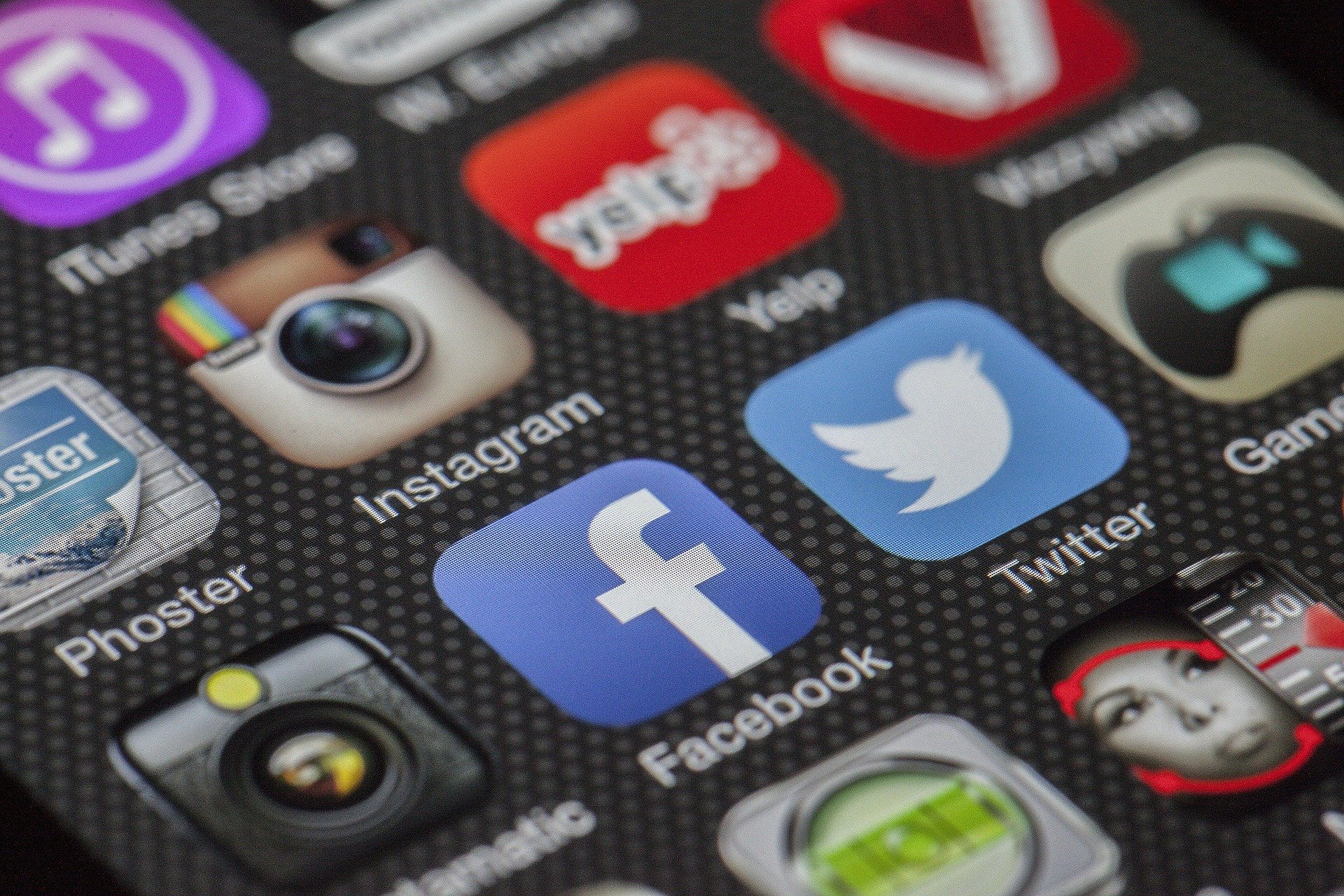Sociocultural approach to anxiety
 The sociocultural approach looks at how environmental and cultural factors may play a role in anxiety disorders. One of the major areas of modern psychological research is on the role of social media in our mental health. Research seems to indicate a correlation between social media use and anxiety disorders. This chapter will explore potential explanations for this.
The sociocultural approach looks at how environmental and cultural factors may play a role in anxiety disorders. One of the major areas of modern psychological research is on the role of social media in our mental health. Research seems to indicate a correlation between social media use and anxiety disorders. This chapter will explore potential explanations for this.
Social media: friend or foe?
It is well accepted by psychologists that higher levels of social media use are correlated with higher levels of anxiety in young adults. Vannucci et al (2017) carried out an online survey on social media use and anxiety symptoms. The sample was made up of 563 young adults from the U.S. (18–22 years-old; 50.2% female; 63.3% Non-Hispanic White). Participants self-reported the amount of time they spent using various social media sites on an average day and responded to anxiety questionnaires. The analysis of the data showed that higher rates of daily social media use were correlated with participants scoring high enough to indicate a potential anxiety disorder.
The first question is - how do we know that it is about the use of social media and not about simply being online? Could it be that screen time is what is actually leading to higher levels of anxiety? Sanders et al (2019) carried out a longitudinal study of 4013 Australian children aged 10–11 who were assessed every two years over a four-year period. The children kept diaries of the amount of time they spent on screen and classified that time as "passive" (e.g. watching movies), social (social media), educational, or interactive (gaming). The researchers found that there were moderate negative effects for most of the classification, but higher amounts of screen time for educational purposes was actually correlated with more positive outcomes. Passive screen time was the most detrimental. Their findings suggest that the amount of screen time is not the issue, but rather, the way that children use their screen time. The study is also a bit problematic as the children were aged 10 - 11 at the beginning of the study and 14 - 15 at the end of the study. It may be that they were too young to show the type of social media usage that it is typical of young adults who show anxiety disorders.
So, why is it that the use of social media specifically is linked to anxiety disorders? Bonnette et al (2019) carried out an online survey of 1314 American adults, aged 18 - 82. Their findings were that individuals with generalized anxiety disorder showed behaviours that could be classified as "social media addiction." They had a greater likelihood of comparing themselves to others who are better off than they are, being bothered if unfriended/unfollowed, and being more likely to post under the influence of alcohol. Particularly, the study noted that upward social comparison - that is, comparing oneself to others who are "better off" was significantly linked to GAD.
Thinking about research: Vogel et al (2014)
 Several studies (eg. Chang & D'zurilla, 1996; Tuijl et al, 2014) have shown that low self-esteem is a risk factor for anxiety disorders. Vogel et al (2014) carried out a study on how social comparison may affect one's self-esteem. This study gives us a potential insight into the role of social comparison on anxiety disorders.
Several studies (eg. Chang & D'zurilla, 1996; Tuijl et al, 2014) have shown that low self-esteem is a risk factor for anxiety disorders. Vogel et al (2014) carried out a study on how social comparison may affect one's self-esteem. This study gives us a potential insight into the role of social comparison on anxiety disorders.
The sample was made up of 128 undergraduates (94 female) from an American university who participated in exchange for course credit. The median age was 19.
Participants were told that they were taking part in a study of "person perception" in social media. The researchers were actually looking to see how social comparison would affect self esteem. To manipulate social comparison, the researchers designed two types of profiles. First, there was the content profile. This profile was supposedly what the user had posted on his/her social media site. Behaviours were seen as either "healthy" or "unhealthy." Secondly, there was the social network profile. This included comments and virtual “likes” in order to show the user’s popularity and social connectedness
Participants were randomly allocated to one of four conditions:
- A same-sex profile with an upward comparison on user content and social network content
- A same-sex profile with an upward comparison on user content but a downward comparison on social network content
- A same-sex profile with a downward comparison on user content but an upward comparison on social network content
- A same-sex profile with a downward comparison on user content and social network content
Participants spent three minutes viewing the profile and were told to remember details about the user. Then, participants were asked to take the State Self Esteem scale to assess their current level of self-esteem. Finally, they were asked questions to evaluate both themselves and the user.
The following graph shows how participants rated themselves compared to the "user" in the social network profile condition.

The results revealed that participants’ self-esteem and relative self-evaluations were significantly lower when the user’s profile contained upward comparison information (e.g., a high activity social network, healthy habits) than when the user’s profile contained downward comparison information (e.g., a low activity social network, unhealthy habits)
Critical thinking: Talking about validity
When discussing the study above, there are several concerns about validity. For each of the following types of validity, how would you evaluate the study by Vogel et al with regard to the role of social media on anxiety disorders?
Internal validity
The internal validity of the study is high. The study is clearly controlled. The participants were randomly allocated to conditions. The researchers manipulated an independent variable while trying to control other variables. There was deception used to lower demand characteristics - they were told to try to memorize the details of the user's profile.
Ecological validity
The ecological validity here is rather difficult to determine. The study is done under controlled lab conditions, so the study could be said to have low ecological validity. However, the task of looking at a stranger's profile on social media is not an artificial task - it is something that students do quite frequently. The fact that the person is alone doing the task is also not something that is out of the ordinary. However, it is most likely that ecological validity is low - as you will see in the response to construct validity.
Construct validity
There are several variables that are being measured: one's "social comparison style", level of self-esteem, self-evaluation, and anxiety. It is difficult to know to what extent social comparison took place while reading the profile. The participants were asked to rate the qualities of the use and of themselves. The act of taking the survey may have been what forced the comparison and not simply the reading of the profile. Self-esteem and self-evaluation were self-reported. This could be open to expectancy effects. Finally, the study was not focused on anxiety disorders. Although other research indicates that lowered self-esteem is linked to anxiety disorders, we cannot say that this study directly studied this variable.
Predictive validity
The study would not be able to directly predict anxiety disorders. It could, however, be considered with other research that shows the correlation between anxiety disorders and low self-esteem to potentially predict disorders - but this would require more research. In addition, the study is cross-sectional, based on a single incidence with a single profile. This is unlikely to predict the long-term and repeated effects of upward comparison.
Population validity
The study was a volunteer sample taken from an opportunity sample (university students). However, they were all in the same course - most likely an introductory psychology course. This means that although the students may be representative of undergraduate psychology students at the university, they would not represent the student population at that school. Since the sample was volunteer rather than randomly chosen, even that level of representativeness is doubtful.
Strengths.
- Sociocultural approaches attempt to explain gender and cultural differences in the prevalence and symptoms of anxiety disorders.
- Sociocultural approaches tend to be more holistic, acknowledging the role of several different variables in behaviour.
Limitations
- Much of the data is collected by self-report measures. This is open to participant biases and demand characteristics.
- Correlational research has the problem of bidirectional ambiguity. It is not possible to know whether people with anxiety disorders use social media more - or whether the use of social media leads to anxiety disorders. Cause and effect cannot be determined.
- Experimental research to test complex social interactions often lacks ecological validity.

 IB Docs (2) Team
IB Docs (2) Team
